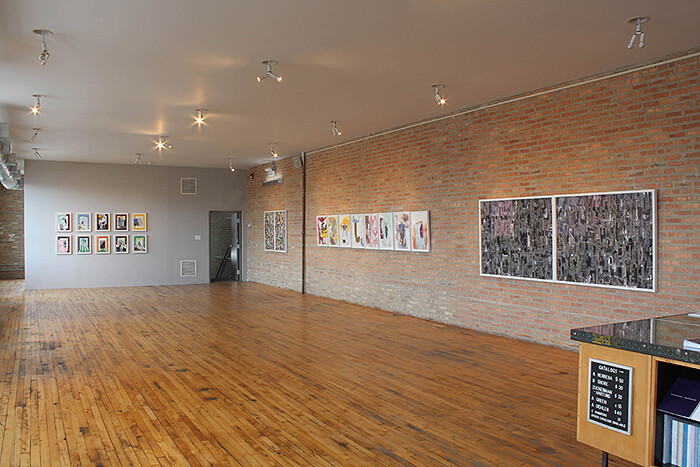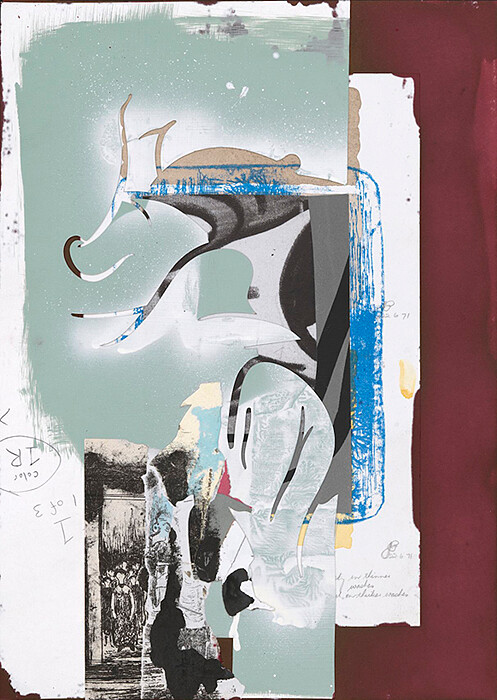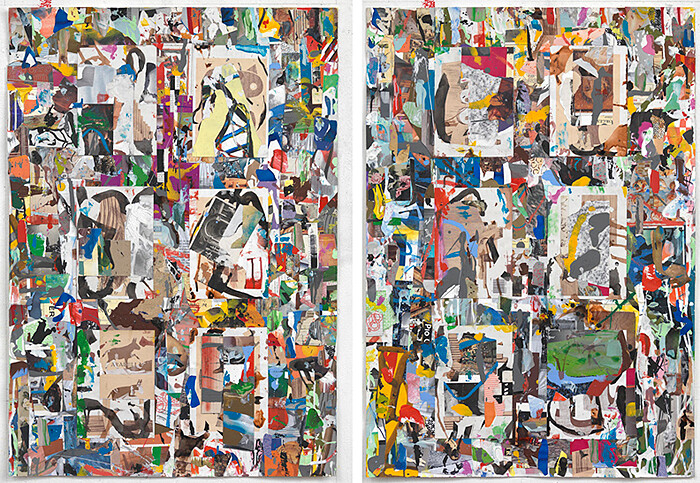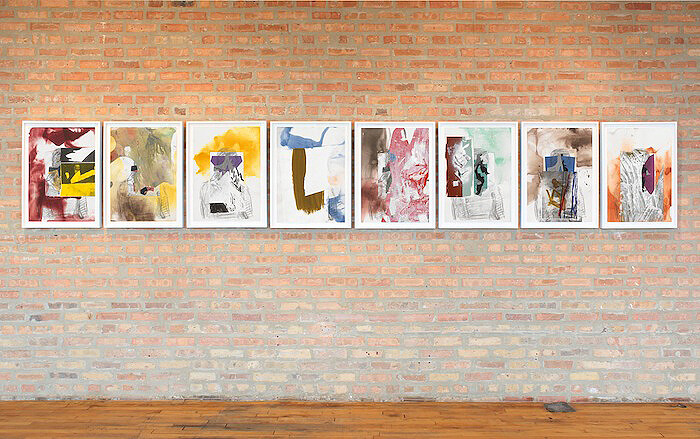Collage is Arturo Herrera’s preferred medium. He deploys its vast paper-based vocabulary the same way an abstract painter would activate a range of color, mark, stroke, and line. But it is the juxtaposition of disparate imagery, structural invention, and the disjunction of fragments and surfaces that drive his collages. Critic George Baker writes that rather than being the medium of the “new,” as it was in the early twentieth century with the work of Picasso and Braque, that “collage was born instead of dilapidation and decrepitude, at its best with yellowed, crumbling newspaper, fading wallpaper, and discarded junk, and trash. It was a language of depletion and deletion, more destructive than constructive in its essence.” (1) That is to say, in the Modern trajectory, collage and the medium’s many political positions are not the overarching foundations to Herrera’s formally scrupulous compositions. Instead, Herrera’s collages occupy an indistinct state, bringing together fragments to create a mimetic effect, piecing together found imagery so that archetypal psychology can make claims to the cognitive processes of memory, awareness, and recognition. With pragmatic elegance from his worktable, Herrera achieves this with scissors, glue, and a nearly endless reserve of found material.
His exhibition at Corbett vs. Dempsey marks a return to Chicago where he started his incursion of co-mingling the familiar and the abstract, in the 90s while at graduate school at the University of Illinois. This exhibition also examines his interest in the idea of “series.” Of the genre, Herrera stated in an interview with John Corbett that series are remarkable because they “remain basically fragmented and complete at the same time.” The exhibition is also accompanied by a billboard, atop a building on a main city artery that can be viewed from the gallery’s long expanse of windows. Drawn to the formal elements comprising weekly grocery store adverts, he collected and then subjected these cheaply produced flyers to an archival process when he was still in school. For this exhibition, he enlarged these flyers for the billboard, but left them graphically unaltered. These glaringly pink, yellow, and black advertisements for “Vienna Bread,” “Scot-Tissue,” and “Ground Beef” bear their original early 90s prices, prices that appear comically low in 2012. And if not for the prices, this familiar looking sign would go unnoticed as an art project. Not surprisingly the regional grocery chain that originally commissioned these advertisements for its store windows over 15 years ago had the gallery take down Herrera’s billboard project before the close of the exhibition.
A ten-part series inside the gallery titled “An evening with C.W.” (2012) takes a central composition as its organizing motif. Overlaying a range of obscuring collage elements, some printed with cartoon lines and other stained with spills of transparent paint, these ten collages emphasize framing and rectilinear composition. They each build on a prominent center and a conspicuous colored border. What is recognizable here is the common format of art presentation: the frame, the matt, a centered print, concentrically reproduced in each work as an impetus to examine the assumptions and location of value. The C.W. in the title refers to Christopher Wheeldon, a choreographer of contemporary ballet, whose performance Herrera saw at the New York Public Library in 2001. “Arabella” (2012), a two-part series, references the opera by Richard Strauss. A passionate opera enthusiast, Herrera suggests in the exhibition catalog that, “Opera is our portrait larger than life. Collage is our portrait of life rearranged and reordered.” “Arabella” is comprised of two active fields of color and small paper fragments, some of which reveal letters and words including the piece’s title. But the chaos of the compositions yields to six larger rectilinear shapes that grid the center of each dynamic field.
Another two-part series, “12 or more” (2012), is dramatically different than “Arabella” by the fact it employs a mostly gray palette that features warm and cool shifts within its grisaille tonal range. Its paper shapes are small and vertically orientated. And most of the elements are printed with homogenous linear black striping, reinforcing a straight up-and-down pattern. But this piece does nothing to foreground the psychological conditions of Herrera’s collages. Awareness and recognition instead give way to process and repetition, making the viewer aware of the inherent labor in the process of patternmaking. The result, albeit, is decorative. “12 or more” lacks any of the twisted subconscious underpinnings that result from building compositions with familiar representations, stock materiality, and found abstraction. But Herrera has always been a master formalist and his ability to embed oneiric configurations in his compositions—whether in his wall paintings, cut felt works, or collages—has safeguarded the work from becoming either a specimen of lyrical formalism or a critical mode exploiting appropriation strategies. Redirecting his recognizable style and methodology to underscore process, pattern, and the decorative will challenge Herrera’s delphic psychological trajectory, and I, for one, am eager to see how he negotiates this new territory.
(1). George Baker, VIVA HATE, Richard Hawkins: Third Mind, (The Art Institute of Chicago; 2010) p.41.







